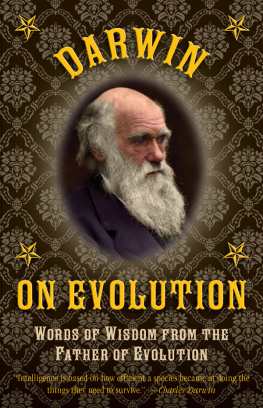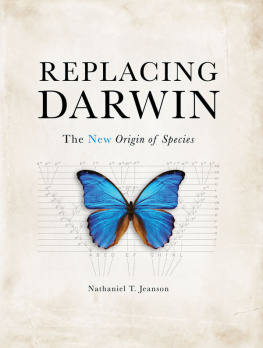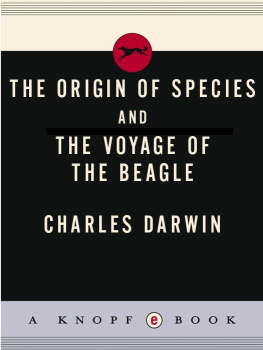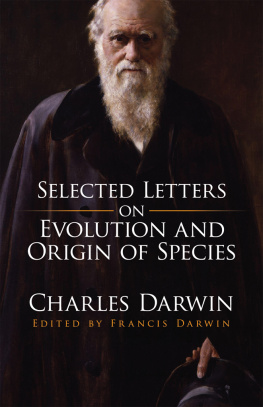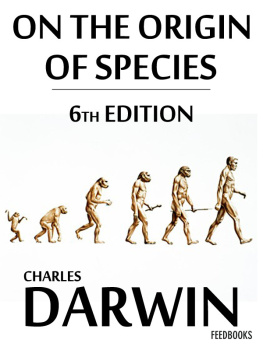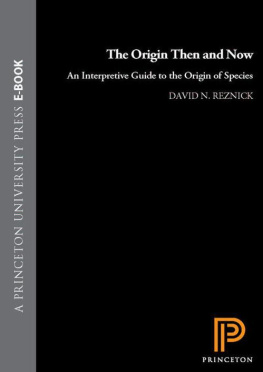REMARKABLE CREATURES
Carroll has an agreeably conversational style, giving personal immediacy to what might so easily have been a mere progress-report on the quest for natural origins during the past 150 years Offers a bracing tonic for those whose rational enjoyment of the natural universe currently seems in danger of being overwhelmed by the strident infantilism of creationists
Spectator
Leaves you with an overwhelming sense of awe and respect for the most remarkable of creatures, the men and women who searched for the origins of species and in doing so gave us a profound sense of place among life on Earth
Guardian
[Of] the books published to mark Darwins anniversaries this year best, by a narrow margin, is Sean Carrolls Remarkable Creatures, which manages to combine a wide narrative sweep with wonderful details and superb writing
Financial Times
Sean Carroll is both a leading exponent of the modern search and a forceful public advocate for biological science as one of the glories of our culture not yet another trip down the heritage nostalgia trail, but the celebration of a vital tradition that began with Darwin and becomes stronger with every passing year
Daily Mail
Delightful [Sean Carroll] understands and conveys the adventure of scientific discovery, the passionate desire to know, that united them all
Sunday Telegraph
ABOUT THE AUTHOR
Sean B. Carroll is an investigator at the Howard Hughes Medical Institute and professor of genetics at the University of Wisconsin-Madison. He is the author of Endless Forms Most Beautiful: The New Science of Evo Devo and The Making of the Fittest: DNA and the Ultimate Forensic Record of Evolution. He is one of the leading biologists of his generation, and his seminal scientific discoveries have been featured in Time, the U.S. News & World Report, Discover, the New York Times, and other publications.
www.seanbcarroll.com
Remarkable Creatures
Epic Adventures in the Search for the Origins of Species
SEAN B. CARROLL

First published in Great Britain in 2009 by Quercus
This paperback edition first published in 2009 by
Quercus 21
Bloomsbury Square
London
WC1A 2NS
Copyright 2009 by Sean B. Carroll
Published by permission of Houghton Mifflin Harcourt
The moral right of Sean B. Carroll to be identified as the author of this work has been asserted in accordance with the Copyright, Designs and Patents Act, 1988.
All rights reserved. No part of this publication may be reproduced or transmitted in any form or by any means, electronic or mechanical, including photocopy, recording, or any information storage and retrieval system, without permission in writing from the publisher.
A CIP catalogue record for this book is available from the British Library
eBook ISBN 978 1 84916 862 5
Print ISBN 978 1 84916 072 8
This book is a work of fiction. Names, characters, businesses, organizations, places and events are either the product of the authors imagination or are used fictitiously. Any resemblance to actual persons, living or dead, events or locales is entirely coincidental.
10 9 8 7 6 5 4 3 2 1
You can find this and many other great books at:
www.quercusbooks.co.uk
FOR JAMIE, WILL, PATRICK, CHRIS, AND JOSHTHE MOST REMARKABLE CREATURES IN MY WORLD
Contents
PART ONE.
THE MAKING OF A THEORY
PART TWO.
THE LOVELIEST BONES
PART THREE.
THE NATURAL HISTORY OF HUMANS
What is it that confers the noblest delight? What is that which swells a mans breast with pride above that which any experience can bring to him? Discovery! To know that you are walking where none others have walked; that you are beholding what human eye has not seen before; that you are breathing a virgin atmosphere. To give birth to an ideato discover a great thoughtan intellectual nugget, right under the dust of a field that many a brain-plow had gone over before To be the firstthat is the idea. To do something, say something, see something before anybody elsethese are the things that confer a pleasure compared with which other pleasures are tame and commonplace These are the men who have really livedwho have actually comprehended what pleasure iswho have crowded long lifetimes of ecstasy into a single moment.
Mark Twain, Innocents Abroad (1869)
REMARKABLE CREATURES
PREFACE
A Mixture of Spirit and Deed
NOT SO LONG AGO, most of the world was an unexplored wilderness. The animals, plants, and people that inhabited the lands beyond Europe were unknown, at least as far as the Western world was concerned. The rivers and jungles of the Amazon, the Badlands of Pata -gonia and of the American West, the tropical forests of Indonesia, the savannah and center of Africa, the vast interior of Central Asia, the polar regions, and the many chains of islands that dot the oceans were complete mysteries.
And, while our knowledge of the worlds living inhabitants was slim, our grasp of our planets past was nonexistent. Fossils had been known for millennia, but they were seen in the light of local mythologies about dragons and other imagined creatures, not in the light of natural science.
Our sense of the time scale of life on earth? Vague and vastly off the mark.
And our picture of our own species history? A set of fantastic myths and fairy tales.
The explorations of the previously unseen parts of the world and the unearthing of the history of life and our origins are some of the greatest achievements in human history. This book tells the stories of some of the most dramatic adventures and important discoveries in two centuries of natural historyfrom the epic journeys of pioneering naturalists to the expeditions making headlines todayand how they inspired and have expanded one of the greatest ideas of modern science: evolution.
We will encounter many amazing creatures of the past and present, but the most remarkable creatures in these stories are the men and women. They are, without exception, remarkable people who have experienced and accomplished extraordinary things. They have lived the kinds of lives that Twain extolledthey walked where no others had walked, saw what no one else had seen, and thought what no one else had thought.
The people in these stories followed their dreamsto travel to faraway lands, to see wild and exotic places, to collect beautiful, rare, or strange animals, or to find the remains of extinct beasts or human ancestors. Very few started out with any notion of great achievement or fame. Several lacked formal education or training. Rather, they were driven by a passion to explore nature, and they were willing, sometimes eager, to take great risks to pursue their dreams. Many faced the perils of traveling long distances by sea. Some confronted the extreme climates of deserts, jungles, or the Arctic. Many left behind skeptical and anxious loved ones, and a few endured years of unimaginable loneliness.
Their triumphs were much more than survival and the collecting of specimens from around the world. A few pioneers, provoked by a riot of diversity beyond their wildest imaginations, were transformed from collectors into scientists. They posed and pondered the most fundamental questions about Nature. Their answers sparked a revolution that changed, profoundly and forever, our perception of the living world and our place within it.
Unlike their privileged countrymen back in the universities, churches, and drawing rooms of Europe, most of whom believed that the origins of living things was a matter outside the realm of natural science, these explorers asked not just what existed, but wondered how and why these creatures came to be. Unlike their teachers, who pursued a natural theology that interpreted everything in Nature as part of the design of a Creatorpeaceful, harmonious, stable, and unchangingthis new cadre of naturalists discovered that Nature was, in fact, a dynamic and perpetual battleground in which creatures competed and struggled to survive, a war in which they either adapted and changed or were exterminated. Unlike their predecessors, who explained the distribution of living species in the world much as one would the instant and premeditated placement of pieces on a chessboard, these naturalists discovered that the world and the life it contained had a very long history that shaped where various plants and animals were found across the globe. And, unlike their contemporaries who viewed everything in Nature as being purposely created for mans benefit and domination, they rejected that conceit and placed humans within the animal kingdom, with our own earthly origins.
Next page

